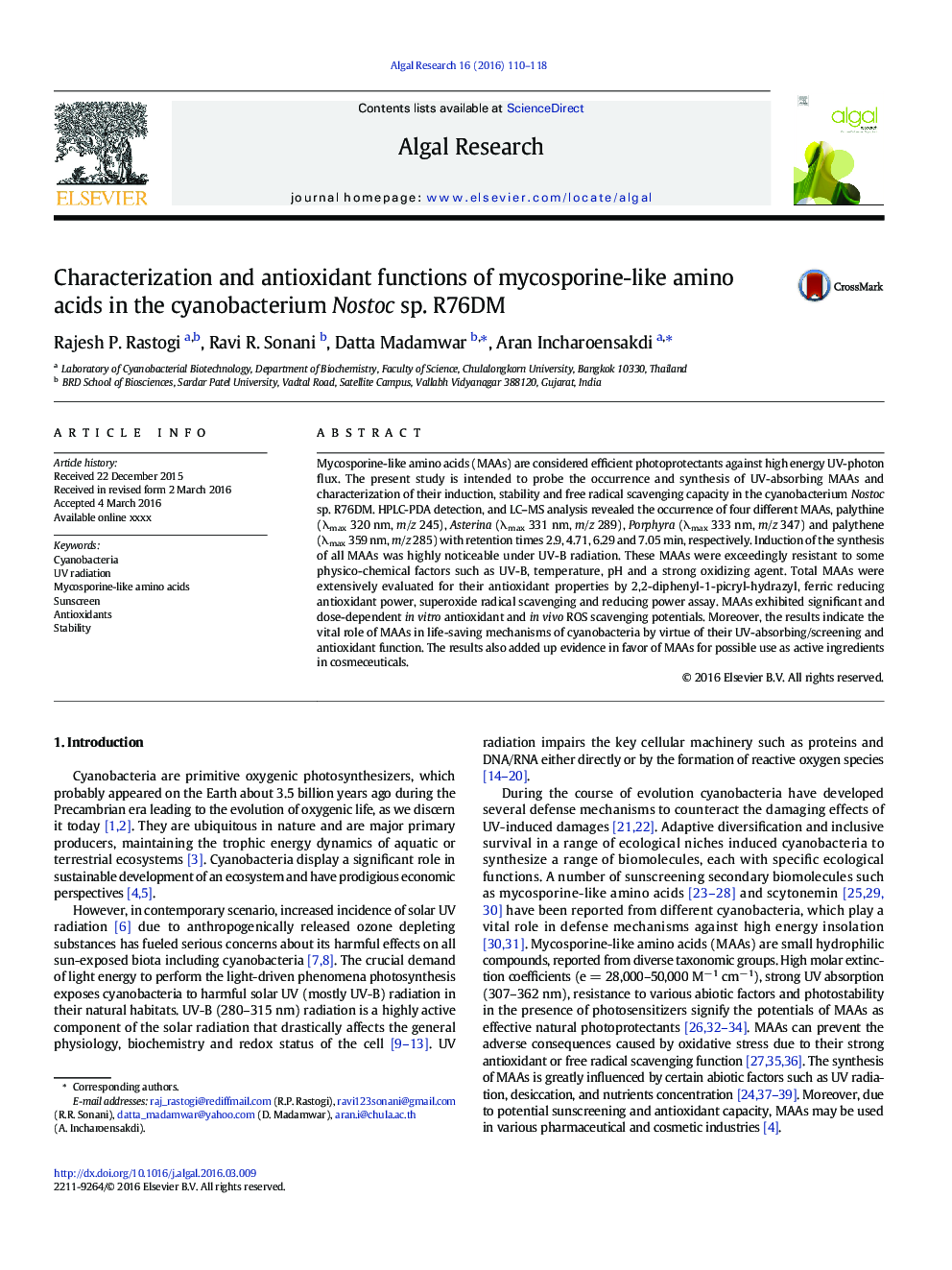| Article ID | Journal | Published Year | Pages | File Type |
|---|---|---|---|---|
| 8087193 | Algal Research | 2016 | 9 Pages |
Abstract
Mycosporine-like amino acids (MAAs) are considered efficient photoprotectants against high energy UV-photon flux. The present study is intended to probe the occurrence and synthesis of UV-absorbing MAAs and characterization of their induction, stability and free radical scavenging capacity in the cyanobacterium Nostoc sp. R76DM. HPLC-PDA detection, and LC-MS analysis revealed the occurrence of four different MAAs, palythine (λmax 320 nm, m/z 245), Asterina (λmax 331 nm, m/z 289), Porphyra (λmax 333 nm, m/z 347) and palythene (λmax 359 nm, m/z 285) with retention times 2.9, 4.71, 6.29 and 7.05 min, respectively. Induction of the synthesis of all MAAs was highly noticeable under UV-B radiation. These MAAs were exceedingly resistant to some physico-chemical factors such as UV-B, temperature, pH and a strong oxidizing agent. Total MAAs were extensively evaluated for their antioxidant properties by 2,2-diphenyl-1-picryl-hydrazyl, ferric reducing antioxidant power, superoxide radical scavenging and reducing power assay. MAAs exhibited significant and dose-dependent in vitro antioxidant and in vivo ROS scavenging potentials. Moreover, the results indicate the vital role of MAAs in life-saving mechanisms of cyanobacteria by virtue of their UV-absorbing/screening and antioxidant function. The results also added up evidence in favor of MAAs for possible use as active ingredients in cosmeceuticals.
Related Topics
Physical Sciences and Engineering
Energy
Renewable Energy, Sustainability and the Environment
Authors
Rajesh P. Rastogi, Ravi R. Sonani, Datta Madamwar, Aran Incharoensakdi,
